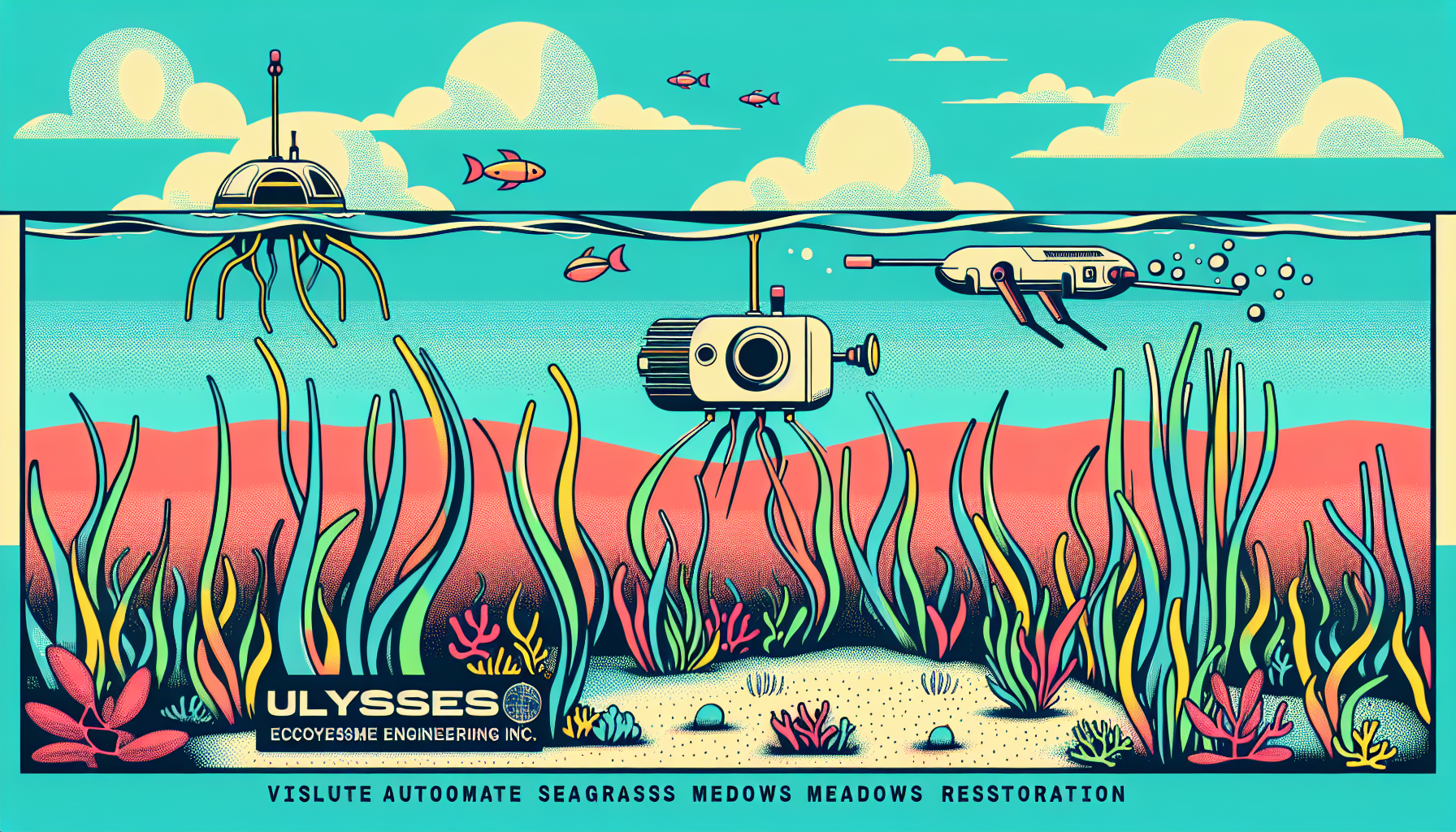The Mission
Founded in 2023, Ulysses set out with a clear goal: to use advanced, affordable technology for the good of the oceans. Their mission begins with restoring seagrass habitats, which are vital for marine life. Seagrass meadows not only absorb large amounts of carbon dioxide from the atmosphere, they also provide shelter for fish, stabilize shores against erosion, and create rich environments for countless species.
How the Robots Work
Ulysses has created a fleet of self-guided robots designed to work both on the ocean surface and deep underwater. These robots are loaded with seagrass seeds and are programmed to plant them precisely where they’re needed most. By moving across the sea floor, the robots can restore entire meadows much faster than traditional methods, which are often slow, costly, and limited in scale.
The system works as a team: surface vehicles support the operation, while subsea robots do the planting. This integrated approach allows Ulysses to reach locations that would otherwise be too difficult or expensive for people to manage.
Key Innovations
- Accessible and Scalable: Ulysses has designed their robots to be far more cost-effective than older systems. By making advanced restoration technology accessible, they open the door to larger projects and broader impact.
- Full Ocean Access: The combined strength of surface and underwater vehicles means Ulysses can effectively reach any part of the ocean. This flexibility allows for restoration on a grand scale and for tasks that require rapid adaptation.
- Physical Restoration: Many marine robots are used only to collect data, but Ulysses’ robots take action—they gather seeds from healthy seagrass beds and then replant them in areas that need recovery. This hands-on approach directly supports ecosystem revival.
The Importance of Seagrass Restoration
By restoring seagrass meadows, Ulysses is helping the planet in several ways. Seagrass is a powerful natural ally in the fight against climate change because it stores carbon far more effectively than most forests on land. Healthy seagrass beds also serve as nurseries for fish and other sea creatures, making them essential for rich and diverse marine life.
The loss of seagrass affects water quality, coastal resilience, and even local economies. Ulysses’ work supports cleaner water, protects coastal areas, and helps maintain conditions for vibrant fisheries and tourism.
Looking Ahead
The robots engineered by Ulysses are just the beginning. The company sees a future where their technology doesn’t stop at seagrass. These autonomous systems could help protect other underwater habitats, support climate adaptation measures, strengthen maritime security, and even assist with building and maintaining ocean infrastructure.
With their innovative robots, Ulysses is setting a new standard for conservation: one where technology works in harmony with nature. Their work offers hope that large-scale restoration and stewardship of the oceans is not only possible, but within reach.
Conclusion
Ulysses Ecosystem Engineering Inc. stands at the forefront of a quiet transformation in how we care for our planet’s oceans. Their autonomous underwater robots are restoring life to seagrass meadows—one of the ocean’s hidden treasures. Through a blend of vision, technology, and respect for nature, Ulysses is building a foundation for healthier seas and a more resilient world.

Leave a Reply